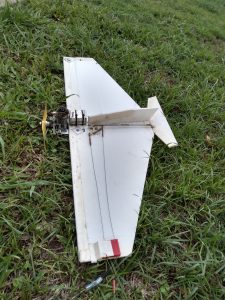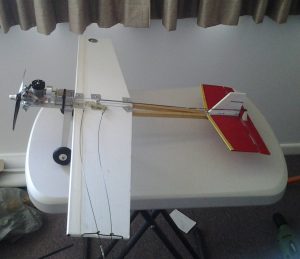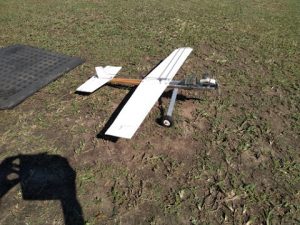Some years go I made a Corflute combat model as detailed in Australian Control Line News issue 187 (June 2014). It’s very robust and I’ve crashed it many times, though it is now finally starting to show as the Corflute is starting to tear in places.

This design inspired me to consider how Corflute could be used to make other types of robust easy to build, easy to repair control line models.
The most obvious thing to try was a basic trainer. The Corflute trainer I designed is based on a design I found on Outerzone. It’s mostly made from Corflute and other non-traditional aeromodelling materials. It was designed to be easy to make and repair and doesn’t require traditional balsa wood model building skills. Though these skills should be acquired as this opens up access to a huge range of C/L model designs via kits and readily available plans.

I did get to try the trainer out on a novice. Whilst it withstood the inevitable errors with aplomb it failed in a way I didn’t expect. The prop-shaft of the engine I used was bent after what seemed to be just a glancing blow off the ground which didn’t look all that severe to me. Small model aircraft engines are generally pretty robust, the one on the combat model (an Enya 15) is still going strong. Before I used it in the combat model it was in another model that was crashed a few times as well.
Feel free to download the trainer building instructions from here. I’d be interested in feedback if you try to build one. I don’t intend to make another because I believe I have discovered an even simpler construction method inspired by “Tuff Baby”, details in this video. It is similar to the combat model in some respects. I have modified the design to have more trainer like dimensions and enlarged it for a 2.5cc engine. I’ll update this post when the model and instructions are finished.
I also intend to design a stunt trainer so that basic maneuvers such as loops, bunts and inverted flying can be tried out without fear of damaging a traditional model beyond easy repair.
Here’s a photo of a model made by a fellow club member.

